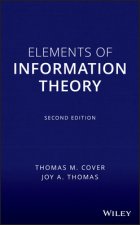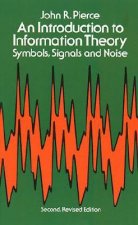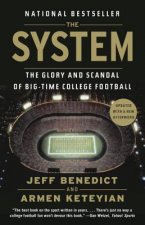
Kézbesítés
Vásárlási tanácsadó
16 105 854 könyv 175 nyelven








Összes nyelv megjelenítése (175)





Nem vált be? Semmi gond! Nálunk 30 napon belül visszaküldheti
 Ajándékutalvány
bármilyen értékben
Ajándékutalvány
bármilyen értékben
Ajándékutalvánnyal nem nyúlhat mellé. A megajándékozott az ajándékutalványért bármit választhat kínálatunkból.
Introduction to Information Theory
 Angol
Angol
 62 b
62 b
30 nap a termék visszaküldésére
Ezt is ajánljuk


PREFACE CHAPTER 1 Introduction 1-1. Communication Processes 1-2. A Model for a Communication System 1-3. A Quantitative Measure of Information 1-4. A Binary Unit of Information 1-5. Sketch of the Plan 1-6. Main Contributors to Information theory 1-7. An Outline of Information Theory Part 1 : Discrete Schemes without Memory CHAPTER 2 Basic Concepts of Probability 2-1. Intuitive Background 2-2. Sets 2-3. Operations on Sets 2-4. Algebra of Sets 2-5. Functions 2-6. Sample Space 2-7. Probability Measure 2-8. Frequency of Events 2-9. Theorem of Addition 2-10. Conditional Probability 2-11. Theorem of Multiplication 2-12. Bayes's Theorem 2-13. Combinatorial Problems in Probability 2-14. Trees and State Diagrams 2-15. Random Variables 2-16. Discrete Probability Functions and Distribution 2-17. Bivariate Discrete Distributions 2-18. Binomial Distribution 2-19. Poisson's Distribution 2-20. Expected Value of a Random Variable CHAPTER 3 Basic Concepts of Information Theory: Memoryless Finite Schemes 3-1. A Measure of Uncertainty 3-2. An Intuitive Justification 3-3. Formal Requirements for the Average Uncertainty 3-4. H Function as a Measure of Uncertainty 3-5. An Alternative Proof That the Entropy Function Possesses a Maximum 3-6. Sources and Binary Sources 3-7. Measure of Information for Two-dimensional Discrete Finite Probability Schemes 3-8. Conditional Entropies 3-9. A Sketch of a Communication Network 3-10. Derivation of the Noise Characteristics of a Channel 3-11. Some Basic Relationships among Different Entropies 3-12. A Measure of Mutual Information 3-13. Set-theory Interpretation of Shannon's Fundamental Inequalities 3-14. "Redundancy, Efficiency, and Channel Capacity" 3-15. Capacity of Channels with Symmetric Noise Structure 3-16. BSC and BEC 3-17. Capacity of Binary Channels 3-18. Binary Pulse Width Communication Channel 3-19. Uniqueness of the Entropy Function CHAPTER 4 Elements of Encoding 4-1. The Purpose of Encoding 4-2. Separable Binary Codes 4-3. Shannon-Fano Encoding 4-4. Necessary and Sufficient Conditions for Noiseless 4-5. A Theorem on Decodability 4-6. Average Length of Encoded Messages 4-7. Shannon's Binary Encoding 4-8. Fundamental Theorem of Discrete Noiseless Coding 4-9. Huffman's Minimum-redundancy Code 4-10. Gilbert-Moore Encoding 4-11. Fundamental Theorem of Discrete Encoding in Presence of Noise 4-12. Error-detecting and Error-correcting Codes 4-13. Geometry of the Binary Code Space 4-14. Hammings Single-error Correcting Code 4-15. Elias's Iteration Technique 4-16. A Mathematical Proof of the Fundamental Theorem of Information Theory for Discrete BSC 4-17. Encoding the English Alphabet Part 2: Continuum without Memory CHAPTER 5 Continuous Probability Distribution and Density 5-1. Continuous Sample Space 5-2. Probability Distribution Functions 5-3. Probability Density Function 5-4. Normal Distribution 5-5. Cauchy's Distribution 5-6. Exponential Distribution 5-7. Multidimensional Random Variables 5-8. Joint Distribution of Two Variables: Marginal Distribution 5-9. Conditional Probability Distribution and Density 5-10. Bivariate Normal Distribution 5-11. Functions of Random Variables 5-12. Transformation from Cartesian to Polar Coordinate System CHAPTER 6 Statistical Averages 6-1. Expected Values; Discrete Case 6-2. Expectation of Sums and Products of a Finite Number of Independent Discrete Random Variables 6-3. Moments of a Univariate Random Variable 6-4. Two Inequalities 6-5. Moments of Bivariate Random Variables 6-6. Correlation Coefficient 6-7. Linear Combination of Random Variables 6-8. Moments of Some Common Distribution Functions 6-9. Characteristic Function of a Random Variable 6-10. Characteristic Function and Moment-generating Function of Random Variables 6-11. Density Functions of the Sum of Two Random Variables CHAPTER 7 Normal Distributions and Limit Theorems 7-1. Bivariate Normal Considered as an Extension of One-dimensional Normal Distribution 7-2. MuItinormal Distribution 7-3. Linear Combination of Normally Distributed Independent Random Variables 7-4. Central-limit Theorem 7-5. A Simple Random-walk Problem 7-6. Approximation of the Binomial Distribution by the Normal Distribution 7-7. Approximation of Poisson Distribution by a Normal Distribution 7-8. The Laws of Large Numbers CHAPTER 8 Continuous Channel without Memory 8-1. Definition of Different Entropies 8-2. The Nature of Mathematical Difficulties Involved 8-3. Infiniteness of Continuous Entropy 8-4. The Variability of the Entropy in the Continuous Case with Coordinate Systems 8-5. A Measure of Information in the Continuous Case 8-6. Maximization of the Entropy of a Continuous Random Variable 8-7. Entropy Maximization Problems 8-8. Gaussian Noisy Channels 8-9. Transmission of Information in the Presence of Additive Noise 8-10. Channel Capacity in Presence of Gaussian Additive Noise and Specified Transmitter and Noise Average Power 8-11. Relation Between the Entropies of Two Related Random Variables 8-12. Note on the Definition of Mutual Information CHAPTER 9 Transmission of Band-limited Signals 9-1. Introduction 9-2. Entropies of Continuous Multivariate Distributions 9-3. Mutual Information of Two Gaussian Random Vectors 9-4. A Channel-capacity Theorem for Additive Gaussian Noise 9-5. Digression 9-6. Sampling Theorem 9-7. A Physical Interpretation of the Sampling Theorem 9-8. The Concept of a Vector Space 9-9. Fourier-series Signal Space 9-10. Band-limited Singal Space 9-11. Band-limited Ensembles 9-12. Entropies of Band-limited Ensemble in Signal Space 9-13. A Mathematical Model for Communication of Continuous Signals 9-14 Optimal Decoding 9-15. A Lower Bound for the Probability of Error 9-16. An Upper Bound for the Probability of Error. 9-17. Fundamental Theorem of Continuous Memoryless Channels in Presence of Additive Noise 9-18. Thomasian's Estimate Part 3 : Schemes with Memory CHAPTER 10 Stochastic Processes 10-1. Stochastic Theory 10-2. Examples of a Stochastic Process 10-3. Moments and Expectations 10-4. Stationary Processes 10-5. Ergodic Processes 10-6. Correlation Coefficients and Correlation Functions 10-7. Example of a Normal Stochastic Process 10-8. Examples of Computation of Correlation Functions 10-9. Some Elementary Properties of Correlation Functions Stationary Processes 10-10. Power Spectra and Correlation Functions 10-11. Response of Linear Lumped Systems to Ergodic Excitation 10-12. Stochastic Limits and Convergence 10-13. Stochastic Differentiation and Integration 10-14. Gaussian-process Example of a Stationary Process 10-15. The Over-all Mathematical Structure of the Stochastic Processes 10-16. A Relation between Positive Definite Functions and Theory of Probability CHAPTER 11 Communication under Stochastic Regimes 11-1. Stochastic Nature of Communication 11-2. Finite Markov Chains 11-3. A Basic Theorem on Regular Markov Chains 11-4. Entropy of a Simple Markov Chain 11-5. Entropy of a Discrete Stationary Source 11-6. Discrete Channels with Finite Memory 11-7. Connection of the Source and the Discrete Channel with Memory 11-8. Connection of a Stationary Source to a Stationary Channel Part 4 : Some Recent Developments CHAPTER 12 The Fundamental Theorem of Information Theory PRELIMINARIES 12-1. A Decision Scheme 12-2. The Probability of Error in a Decision Scheme 12-3. A Relation between Error Probability and Equivocation 12-4. The Extension of Discrete Memoryless Noisy Channels FEINSTEIN'S PROOF 12-5. On Certain Random Variables Associated with a Communication System 12-6. Feinstein's Lemma 12-7. Completion of the Proof SHANNON'S PROOF 12-8. Ensemble Codes 12-9. A Relation between Transinformation and Error Probability 12-10. An Exponential Bound for Error Probability WOLFOWITZ'S PROOF 12-11. The Code Book 12-12. A Lemma and Its Application 12-13. Estimation of Bounds 12-14. Completion of Wolfowitz's Proof CHAPTER 13 Group Codes 13-1. Introduction 13-2. The Concept of a Group 13-3. Fields and Rings 13-4. Algebra for Binary n-Digit Words 13-5. Hammings Codes 13-6. Group Codes 13-7. A Detection Scheme for Group Codes 13-8. Slepian's Technique for Single-error Correcting Group Codes 13-9. Further Notes on Group Codes 13-10. Some Bounds on the Number of Words in a Systematic Code APPENDIX Additional Notes and Tables N-1 The Gambler with a Private Wire N-2 Some Remarks on Sampling Theorem N-3 Analytic Signals and the Uncertainty Relation N-4 Elias's Proof of the Fundamental Theorem for BSC N-5 Further Remarks oil Coding Theory N-6 Partial Ordering of Channels N-7 Information Theory and Radar Problems T-1 Normal Probability Integral T-2 Normal Distributions T-3 A Summary of Some Common Probability Functions T-4 Probability of No Error for Best Group Code T-5 Parity-check Rules for Best Group Alphabets T-6 Logarithms to the Base 2 T-7 Entropy of a Discrete Binary Source BIBLIOGRAPHY NAME INDEX SUBJECT INDEX
Információ a könyvről
 Angol
Angol




 Hogyan vásároljunk
Hogyan vásároljunk





























